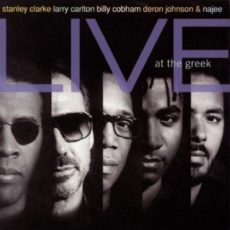
Daily Dose Of Jazz…
Stanley Clarke was born on June 30, 1951 in Philadelphia, Pennsylvania. He was introduced to the bass as a schoolboy when he arrived late on the day instruments were distributed to students and acoustic bass was one of the few remaining selections. Graduating from Roxborough High School he attended the Philadelphia Musical Academy from which he graduated in 1971.
Moving to New York City he found work with Horace Silver, Art Blakey, Dave Brubeck, Dexter Gordon, Gato Barbieri, Joe Henderson, Chick Corea, Pharoah Sanders, Gil Evans and Stan Getz.
During the 1970s Clarke turned to jazz fusion joining Chick Corea and Return to Forever and started his solo career released a number of albums under his own name, his best known solo albums being School Days, Stanley Clarke and Journey to Love.
Stanley began scoring for TV and film for shows like A Man Called Hawk, Pee-wee’s Playhouse, Soul Food. Boyz n the Hood, Tina Turner What’s Love Got to Do With It, Passenger 57, Higher Learning, Poetic Justice, Panther, The Five Heartbeats, Book of Love, Little Big League, and Romeo Must Die and The Transporter.
Clarke formed Animal Logic with rock drummer Stewart Copeland of The Police, and singer-songwriter Deborah Holland. He went on to collaborate with Jeff Beck, Ron Wood’s New Barbarians, Clarke/Duke Project with George Duke, Miroslav Vitouš, a group with Larry Carlton, Billy Cobham, Najee & Deron Johnson, The Rite of Strings with Jean-Luc Ponty and Al Di Meola and Vertu’ with Lenny White and Richie Kotzen.
He has been honored with Bass Player magazine’s Lifetime Achievement Award, has won a Grammy Award, was the first Rolling Stone magazine “Jazzman of the Year”, won “Best Bassist” from Playboy magazine for 10 straight years, and received the Key to the city of Philadelphia, has a star on the Hollywood Walk of Fame, and was featured in Los Angeles magazine as one of the 50 most influential people. Acoustic and electric bassist Stanley Clarke continues to compose for TV and film while performing, recording and touring with his band,
![]()
More Posts: bass
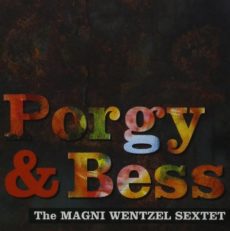
Daily Dose Of Jazz…
Magni Wentzel was born on June 28, 1945 in Oslo, Norway, the daughter of musicians Odd Wentzel-Larsen and Åse Wentzel. She began her career at the tender age of 6 in 1951 in Totenlaget Barneteater. She trained under opera singers Erna Skaug, Almar Heggen and professor Paul Lohmann in Wiesbaden. She took guitar lessons from 1956 and released her debut jazz album That Old Feeling in 1959.
Instead of attending the first year of the newly established Statens Operahøgskole in Oslo, by 1963 Wentzel took another path, choosing to study classical guitar in Spain, Switzerland and England. She was also taught the art of jazz song under Tete Montoliu.
Strongly influenced by Aretha Franklin, she was a member of the Geir Wentzel Band playing Club 7 in Oslo. Magni collaborated extensively with a series of Oslo based musicians, such as the quartets and quintets including Einar Iversen and Egil Kapstad. Peter Gullin dedicated the album Far, Far Away Where Longing Live to her and later she worked for Opera Mobile, then portrayed the mother in The Tales of Hoffmann by Offenbach.
She has performed and recorded with Niels-Henning Ørsted Pedersen, Roger Kellaway, Halvard Kausland, Ole Jacob Hansen, Carl Morten Iversen, Terje Venaas, Egil Johansen, Åse Wentzel, Art Farmer, Red Mitchell, Mads Vinding and many others.
Vocalist, guitarist and composer Magni Wentzel, the recipient of the Gammleng-prisen in 1988 and the Buddyprisen in 1998, continues to perform, compose and record at the age of 71.
![]()
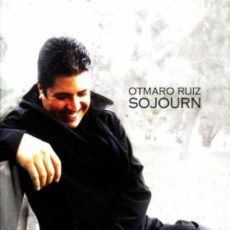
Daily Dose Of Jazz…
Otmaro Ruíz was born June 27, 1964 in Caracas, Venezuela. He began his formal musical studies at the age of eight on piano, classical guitar, harmony, history and aesthetics. He was exposed to other artistic activities such as drawing and acting and at the same time he studied organ.
Otmaro pursued a scientific career as a biologist at the Simón Bolívar University, but kept playing keyboards on the side, landing his first professional work in a pop group in 1980. Deciding to focus entirely on music, he dropped out of school in 1983, playing in his native Venezuela. He toured and recorded with local and visiting musicians, and also became a busy studio musician as a jingles composer and arranger.
By 1989 Ruíz had moved to Los Angeles, California, where he finished his academic training at CalArts, obtaining a master’s degree in jazz performance in 1993. He played with percussionist Alex Acuña, appearing in two albums during the early 1990s. He later recorded with Arturo Sandoval, which was followed in 1996 by a world tour supporting Gino Vanelli. The rest of the decade, he worked with Jon Anderson, Robbie Robertson, Herb Alpert and John McLaughlin. In the new millennium, he has recorded with Hubert Laws, Jing Chi and Jimmy Haslip among others and has recorded and toured with Dianne Reeves.
Pianist, keyboardist, composer and arranger Otmaro Ruíz remains active up to the present day, generally recording and touring with L.A.-based groups and vocalists, and commanding his own projects.
He has also participated in an international jazz-project “JB Project” with American bassist Brian Bromberg and Japanese drummer Akira Jimbo. They released two studio albums: Brombo, followed by Brombo II. In 2012, the Shepherd University at the Cornel School of Contemporary Music awarded Otmaro Ruiz with an Honorary Doctorate in Music Arts.
Sponsored By
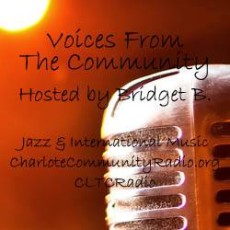
Voices From The Community
![]()
More Posts: piano
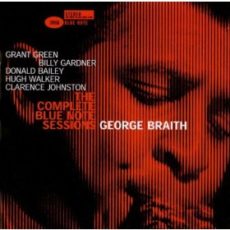
Daily Dose Of Jazz…
George Braith was born George Braithwaite on June 26, 1939 in New York City. Picking up the baritone saxophone in the seventh grade, by his teen years he had his union card. playing with the thirteen-piece Dickens LaRoca band. He would later become a leader in his own right, sharing the bill with musicians like Bud Powell, Roy Ayers and Freddie Hubbard.
His epiphany about the double-horn came in the early 1960s when one night in Harlem, while playing at the Purple Manor, Roland Kirk hit the stage blowing multiple instruments at once and blew George off the stage. They quickly became friends, though the relationship became a little more competitive when George was signed by Blue Note Records.
Known for playing multiple horns at once, a technique pioneered by Rahsaan Roland Kirk, in 1976 Braith invented the Braithophone, two different horns, straight alto and soprano mended together by extensions, valves and connections. He took his invention to Central Park and later to Broadway and 50th Street, where he perfected the sound and attracted crowds. It has become a mainstay for the soul-jazz saxophonist who continues to feature the instrument in performances at various jazz clubs in town, as well as on recordings he produces on his own label, Excellence Records.
![]()
More Posts: saxophone
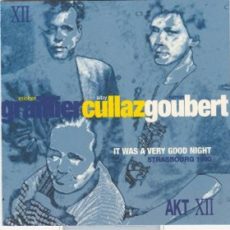
Daily Dose Of Jazz…
Albert “Alby” Cullaz was born on June 25, 1941 in Paris, France, the son of jazz music critic Maurice Cullaz and brother of guitarist Pierre Cullaz. He made his professional debut in 1963 as a member of the Johnny Griffin Quartet.
For many years Alby led a trio with Michel Graillier and Simon Goubert before becoming a sought after sideman. He worked with Joe Albany, Jean-Luc Ponty, Aldo Romano, Michel Graillier, Hank Mobley , René Thomas, Dizzy Gillespie, Slide Hampton, Lee Konitaz, Eddy Louiss, Art Taylor, Dexter Gordon, Kenny Clarke, Guy Lafitte, François Chassagnite, André Condouant, Raymond Fol, Steve Grossman, Rene Urtreger, Jacques & Micheline Pelzer, Sonny Grey, Philly Joe Jones and Chet Baker among others.
He was awarded the prize in 1972 Django Reinhardt Academy award and in 1973 he was received the Prix Django Reinhardt. Contra-bassist Alby Cullaz passed away at the age of 56 on February 8, 1998 after a long illness.
![]()
More Posts: bass


